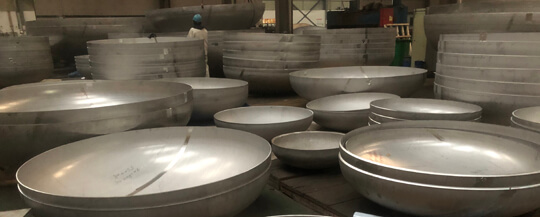This process is suitable for the elliptical heads made of carbon steel, low alloy steel and stainless steel. Other types of heads can also be implemented by reference. This process is a general rule used in conjunction with the product process documents. If there is any conflict with the product process documents or the product process documents have special requirements, the product documents shall prevail.
1.1 Drawing die and lubrication
1.2 Select the tire mold according to the tooling number specified in the product name list.
1.3 The tensile mold used should be intact, and the exhaust hole of the upper mold should not be blocked, and it can be used only after passing the verification.
1.4 The upper and lower dies and the compression ring are respectively fixed on the punch and the press base with studs and attachments, and the gap in the circumferential direction is adjusted to be uniform, and the difference is ≤1mm.
1.5 Before each head is stretched, the tire mold should be checked for looseness and offset and checked for other defects. After confirming, you can continue to use.
1.6 Before each head is stretched and pressed, the scale, slag and other debris on the work surface of the tire mold must be removed, and the pull ring should be evenly coated with lubricant. When cold-stretching the head, apply lubricant to the upper and lower dies and the working surface of the blank holder, the upper and lower sides of the blank.
1.7 Preparation of lubricant.
During hot drawing: graphite powder + oil
Cold-stretched stainless steel: talc + soap + motor oil
2. Blank pre-press
2.1 In order to avoid wrinkling and bulging when the thin head is stretched, the blank can be pre-compressed for the first time.
When the elliptical head S / Di = 0.6--2%, the embossing R≈0.8-0.9Di. For the head with large diameter and thin wall, it can be embossed 2-3 times, from shallow to deep to the specified R value.
2.2 The residual height of the welded joints of the spliced blanks must be polished to be flush with the base material before pressing. When the sheets are spliced, the distance between the outermost weld seam and the center of the board should be less than 0.25Di and the minimum board width should not be less than 300mm.
2.3 After the spliced blank sheet is embossed, you need to use a magnifying glass to strictly check for cracks. When in doubt, surface inspection can be done.
2.4 When the spliced blank sheet is embossed, when a crack occurs at the welded joint, the crack should be removed, and welding repair and flaw detection should be performed according to the process requirements.
